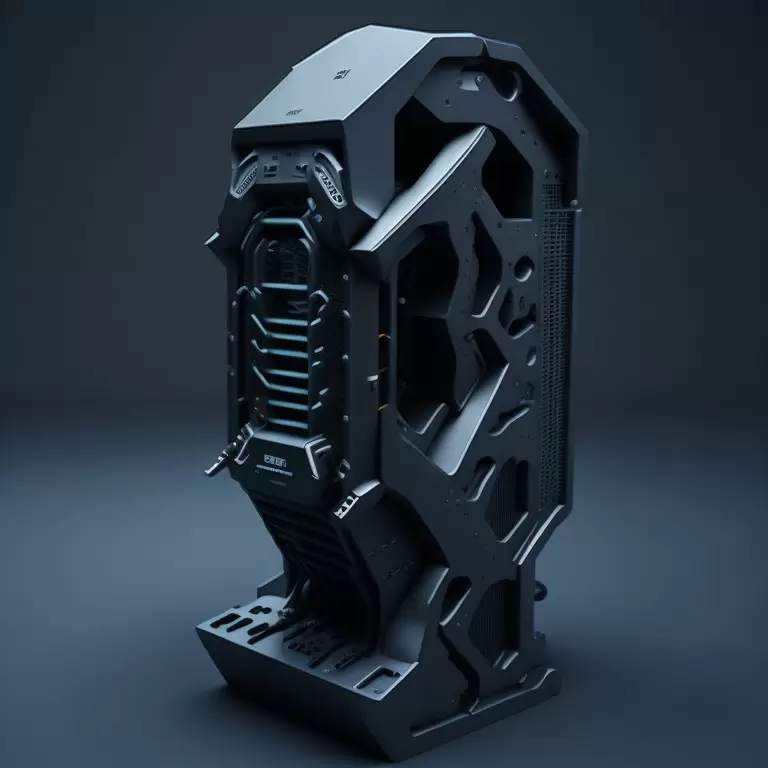Table of Contents:
- Introduction
- 3D Rapid Prototyping Process
- Advantages of 3D Rapid Prototyping
- Applications of 3D Rapid Prototyping
- Materials used in 3D Rapid Prototyping
- Limitations of 3D Rapid Prototyping
- Future Trends in 3D Rapid Prototyping
- Conclusion
-
1.Introduction
3D rapid prototyping, also known as additive manufacturing, is an emerging tool that has revolutionized the product design and development process. This technology has gained popularity in recent years due to its increased efficiency, accuracy, and enhanced process capabilities. It involves the creation of three-dimensional objects by adding layers upon layers of materials.
The history of 3D rapid prototyping can be traced back to the 1980s when the first 3D printer was developed, but it was not until the past decade that the technology reached new heights. Today, 3D rapid prototyping is an essential tool used in various industries, including automotive, aerospace, medical devices, consumer goods, architecture, and more.
-
2. 3D Rapid Prototyping Process
The 3D printing process involves a few simple steps that provide a quicker, more convenient and more cost-effective process than traditional manufacturing processes. The steps in 3D rapid prototyping include:
- Creating a 3D model of the design using 3D modeling software.
- Converting the 3D model into an STL file.
- Loading the STL file into a 3D printer slicing software.
- The slicing software generates a 2D layer-by-layer depiction of the part.
- The 3D printer reads the sliced file and begins building the part layer by layer.
Different 3D rapid prototyping techniques can be used to achieve optimum efficiency and accuracy in parts production. These techniques include Fused Deposition Modeling (FDM), Stereolithography (SLA), Selective Laser Sintering (SLS), and many more.
-
3.Advantages of 3D Rapid Prototyping
There are numerous advantages to using the 3D rapid prototyping process in product design and development. These benefits include:
Reduced Time-to-Market: 3D rapid prototyping enables the design to be tested and validated efficiently and accurately, reducing the time needed for product development.
Cost Savings: 3D rapid prototyping reduces manufacturing costs by eliminating the need for tooling and creating components at a lower cost.
Complex Design Capabilities: Large and complex designs can be produced with ease and feasibility using 3D rapid prototyping.
Prototype Validation: 3D rapid prototyping allows for extensive prototyping, testing, and validation of the designs before going into mass production, thus ensuring the design meets the intended functional requirements.
-
4. Applications of 3D Rapid Prototyping
3D rapid prototyping has an extensive range of applications across various industries. Some of these applications include:
Automotive: 3D rapid prototyping is used in the automotive industry to design and manufacture automotive components such as engine parts, lamp covers, gears, and more.
Aerospace: The aerospace industry uses 3D rapid prototyping for designing and testing complex parts and components, including engine and rocket parts, multi-use aerodynamics, and structural components.
Medical Devices: 3D rapid prototyping is used in the medical device industry to manufacture complex implants and surgical instruments tailored to individual patients.
Consumer Goods: 3D rapid prototyping is used in consumer goods to design product prototypes, such as toys, containers, and accessories.
Architecture: 3D rapid prototyping is used to produce architectural models, decorative fixtures, and building components to help visualize and verify structural designs.
-
5. Materials used in 3D Rapid Prototyping
Several materials can be used in 3D rapid prototyping, depending on the intended application. Common materials used include:
Plastics: These include acrylonitrile butadiene styrene (ABS), polycarbonate (PC), and nylon. They are lightweight and have high strength and heat resistance, making them a popular material for various applications.
Metals: These include stainless steel, titanium, and aluminum. Using metals in 3D rapid prototyping enables the production of high-strength structural parts and components applicable in aerospace, automotive, and other industries.
Multi-material and Composites: These materials can offer more diverse properties, flexibility, and additional functionality to parts.
-
6. Limitations of 3D Rapid Prototyping
While 3D rapid prototyping offers many advantages, certain limitations, such as size and scale constraints and surface finish and detail limitations. For instance, the size of 3D-printed parts is often limited to the size of the 3D printer’s build envelope, and the surface finishes attained are lower than that of traditionally manufactured parts. Material limitations are also a challenge, especially for sensitive or critical applications where the material properties and strength need special consideration.
-
7. Future Trends in 3D Rapid Prototyping
The future of 3D rapid prototyping looks bright, with an increasing need for custom-designed and highly specific products. Future trends include advancements in materials, such as biodegradable and compostable polymers used in a circular economy, connectivity with the Internet of Things (IoT), and other emerging digital technologies like Artificial Intelligence (AI) that can optimize the rapid prototyping process.
Furthermore, there is growing interest in harnessing this technology in industrial scale printing. As 3D rapid prototyping advances into industrial-scale manufacturing, it will impact supply chains, enabling distributed manufacturing and reducing transportation and inventory costs significantly.
If you need about Rapid Prototyping Services,You can click on the V1 Prototype website to find it.
-
8. Conclusion
The 3D rapid prototyping process is an excellent tool used in various industries for product design and development. With a wide range of advantages, including reduced time-to-market, cost savings, complex design capabilities, and prototype validation, the technology is becoming increasingly popular with an increasing application scope.
Despite some limitations, 3D rapid prototyping remains an essential and cost-effective solution for the production of critical and complex components. Its future looks promising, with the development of advanced features such as multi-material printing, integration with IoT and AI technologies, coupled with advancements in materials science, continued research, and investment.
In conclusion, the 3D rapid prototyping process continues to transform the conventional manufacturing process with endless possibilities and applications for new and existing industries. Its adaptive nature continues to push the boundaries of innovation and creativity in product design and development, a tool that every emerging product designer and business owner should seek to embrace.




